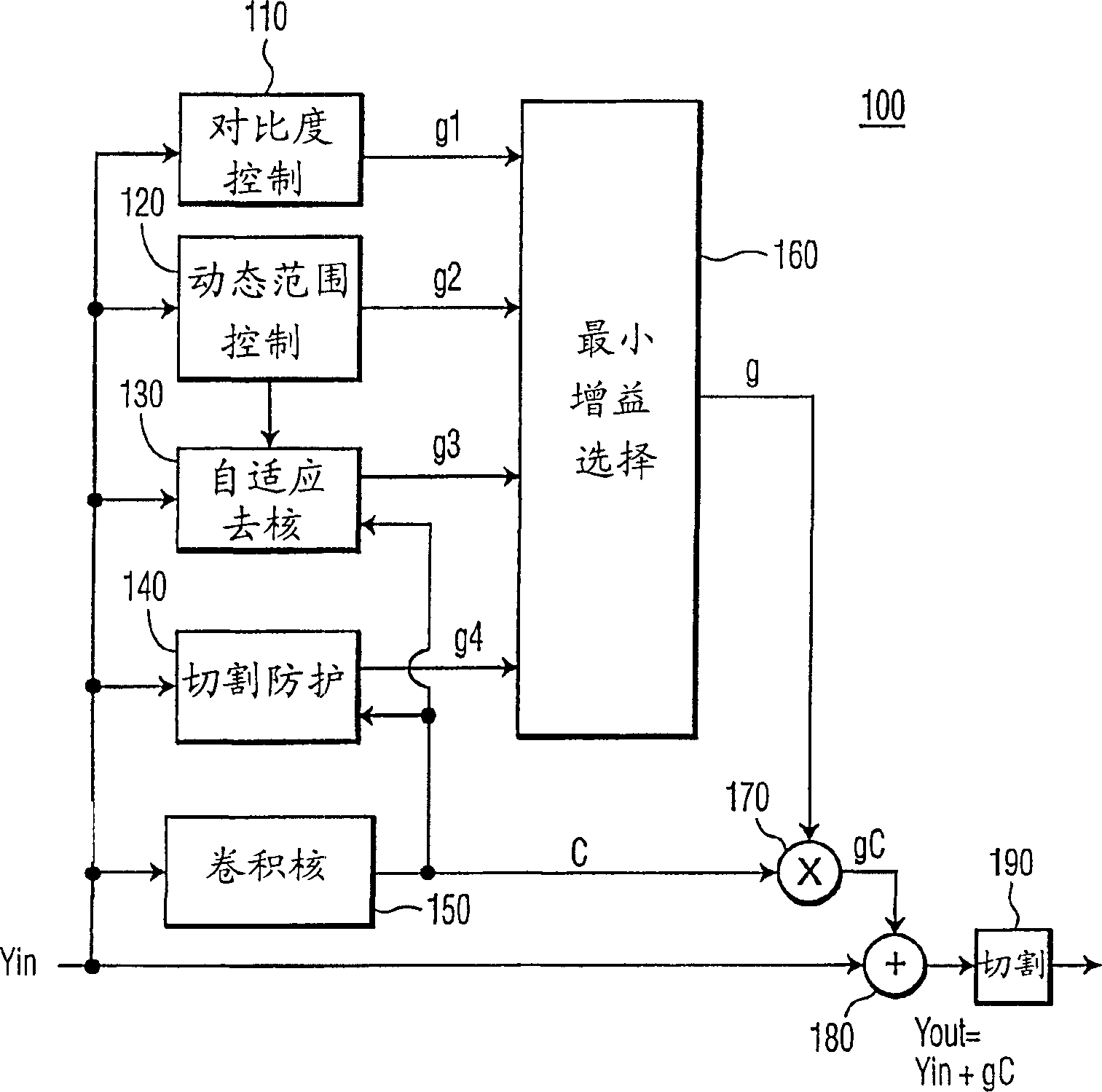Clarity enhancement system and method and video-frequency displaying system
A technology to enhance system and definition, applied in the field of video processing, can solve the problems of the processor bus bandwidth requirements cannot be realized, and the process division cannot be realized.
- Summary
- Abstract
- Description
- Claims
- Application Information
AI Technical Summary
Problems solved by technology
Method used
Image
Examples
Embodiment Construction
[0042] figure 2 An example block diagram of a picture sharpness enhancement system 200 according to the present invention is shown. As mentioned earlier, shown in figure 1 The contrast control 110 and clipping guard 140 modules of the prior art system 100 often produce contradictory results regarding the maximum gain (g1 and g4, respectively) that may be used to determine the convolution-determined Enhanced (g*C). In a preferred embodiment of the invention, the contrast control and cut protection functions, which are usually independent of each other, are integrated as figure 2 A single contrast and cut protection module in the sharpness enhancement system 200.
[0043] To prevent clipping, enhancements applied to each pixel value should not produce output pixel values outside the allowed range of pixel values. For ease of reference and understanding, it is assumed here that the allowable pixel value range is from 0 to 255, although any other value may be used:
[004...
PUM
 Login to View More
Login to View More Abstract
Description
Claims
Application Information
 Login to View More
Login to View More - R&D
- Intellectual Property
- Life Sciences
- Materials
- Tech Scout
- Unparalleled Data Quality
- Higher Quality Content
- 60% Fewer Hallucinations
Browse by: Latest US Patents, China's latest patents, Technical Efficacy Thesaurus, Application Domain, Technology Topic, Popular Technical Reports.
© 2025 PatSnap. All rights reserved.Legal|Privacy policy|Modern Slavery Act Transparency Statement|Sitemap|About US| Contact US: help@patsnap.com



